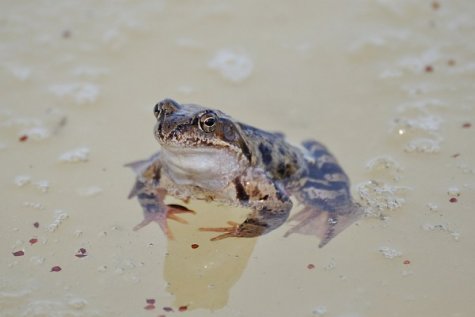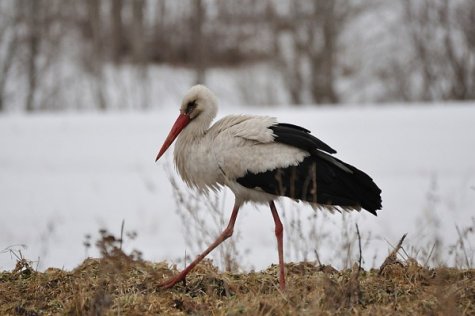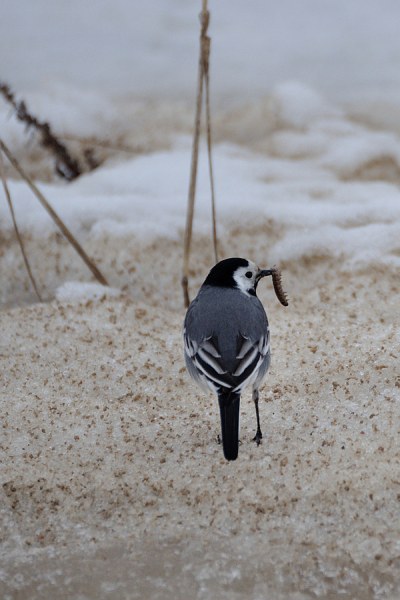This spring arrives with a difference ...
Text and photos Rein Kuresoo, animalcity.eu/kuresoo/
Translation: Liis
Common frog; common brown frog Rohukonn Rana temporaria
The starry-eyed brown frog sits on its bare behind on the cold ice and tries to understand what is happening in the world. The cold-blooded, or poikilothermic, creature should have been roused by the water getting warmer, but it seems that its sleep has rather been chased away by lack of oxygen. When that happens the frog starts to break down its last glycogen resources anaerobically. But in that case the lactic acid generated in the tissues makes the frog’s life really painful, and the suffering creature crawls up to get air. Despite the fact that the frogs on wintering in the bottom mud have calculated the tuning of their egg and sperm cells so that on waking up in spring they should at once be ready for spawning, they still need a little more warmth to manage a really grand mating. The important events in the life of cold-blooded beings, as in the development of plants, depend on the sum of active temperatures in the environment. Spawning is not possible yet, and there is nothing to eat. What to do?
But the frog is not alone in his concerns. Just as in the children’s song* the stork is walking further away – more specifically, a white stork. The belly of the bird, arriving from its African safari and tousled by the long journey, is really empty, but there is nothing much to eat. So, good if the two hungry ones meet – then at least one of them will be saved today.
Wagtail Linavästrik Motacilla alba
The wagtails that have reached the homeland wag their tails at the edges of river ice, or on the bare, thawed areas at roadsides. They seem to have more luck than the white storks – the springtime waters bring out an abundance of invertebrates from their hiding places.
* Stork and frog song - 1st verse sung by children and words (in Estonian)











